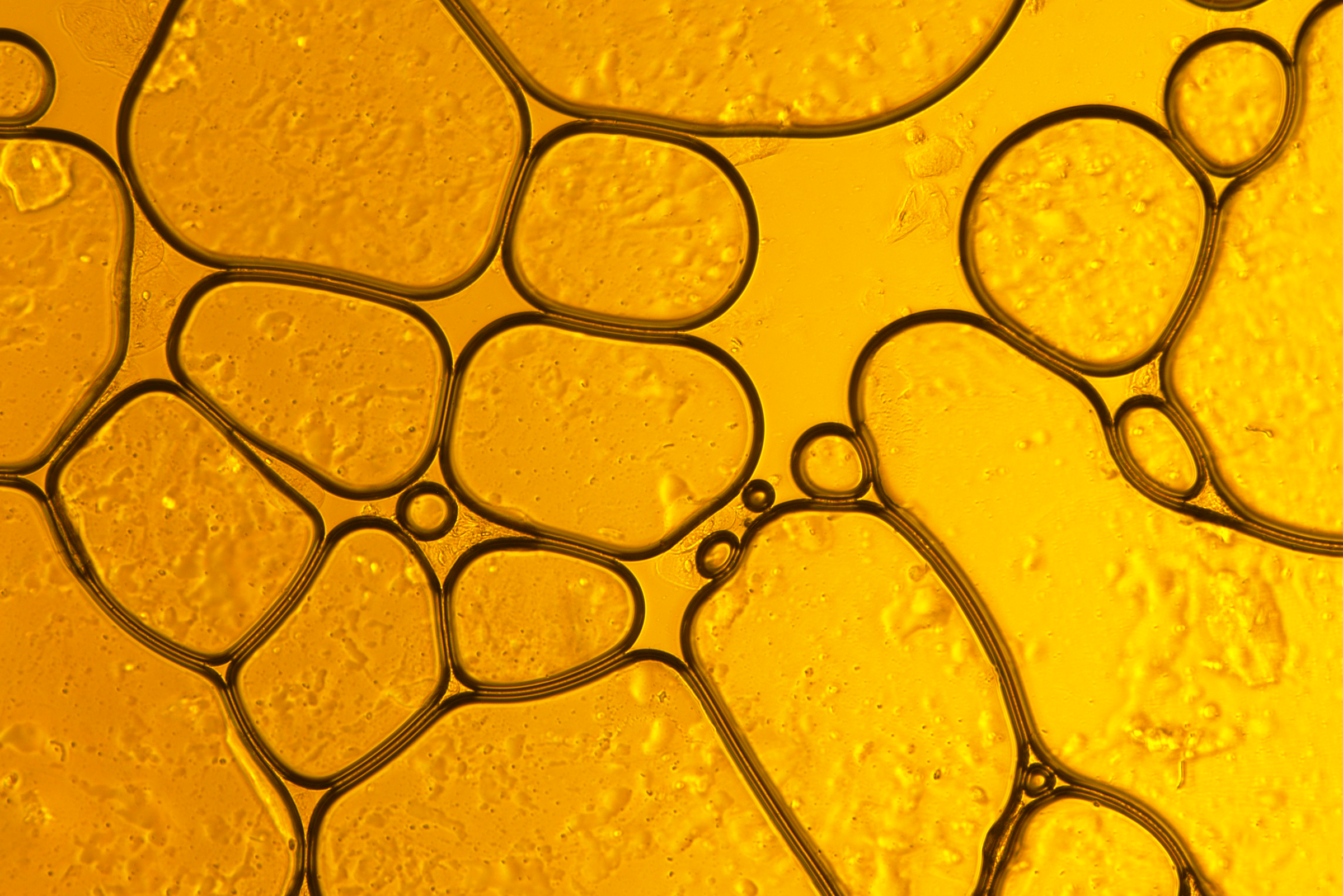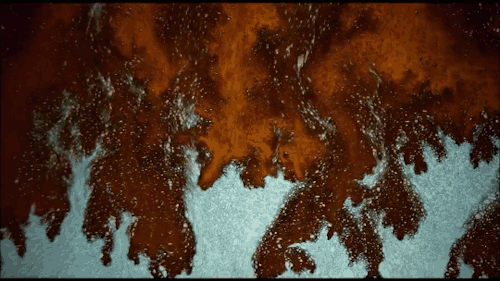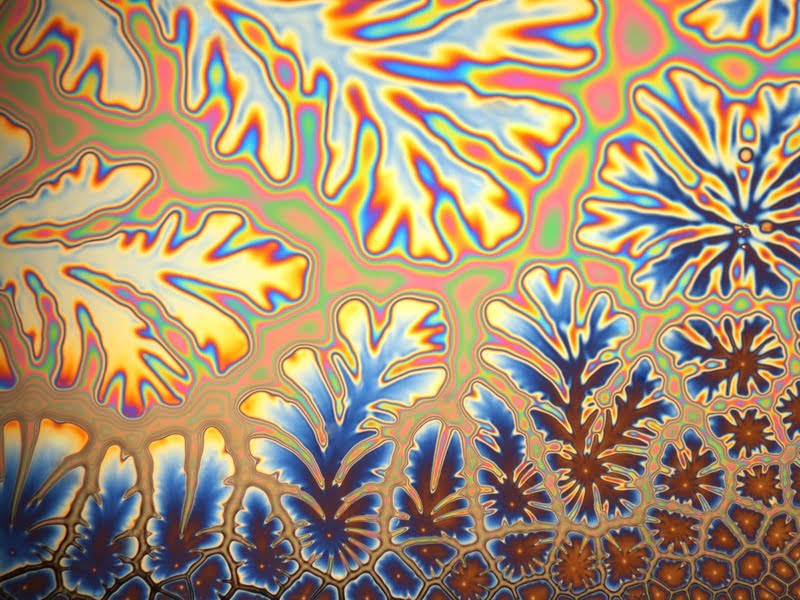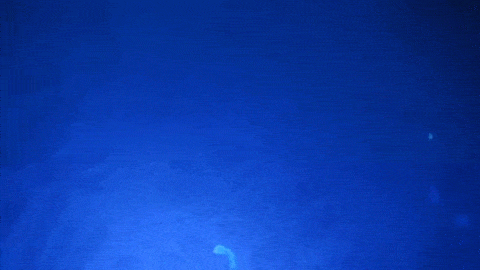Musical duo Dengue Dengue Dengue create live audio/visual performances with fluid dynamics. Their visuals are created by adding various liquids and dyes atop an illuminated background. To add extra dynamism, they sometimes use a sheet of plastic to cover and pump the liquids, creating a pseudo-Hele-Shaw cell where they can trigger fluid instabilities in time to the music. The full performance in this video is nearly an hour long, but at least take some time to scrub through and see a few different sections. (Video credit: Dengue Dengue Dengue/Espacio Fundación Telefónica Lima; submitted by Tania S.)
Tag: Hele-Shaw cell

Granular Fingers
Finger-like shapes often form on fluids injected between glass plates, but what happens when that injected fluid contains particles? That’s the situation in this recent study, where researchers sandwiched a fluid between two glass plates and then injected a second, similar fluid laced with particles.
Despite the differences from the traditional Saffman-Taylor set-up, the granular-filled fluid still forms fingers as long as there’s even a slight density difference between the original and injected fluids. It doesn’t even matter which of the two fluids has the greater density! (Image and research credit: A. Kudrolli et al.)

Coffee, Magnified
Sometimes it’s nice to see a new perspective on something familiar. These images show oils from coffee beans suspended in hot water, as seen under 40x magnification. The crystals you see are caffeine and the variety of shapes in the oil blobs is due to being sandwiched between two layers of glass. You can check out an image of the set-up these students used here. (Image credits: M. Armstrong and B. Pullutasig)


Dendritic
“What happens when two scientists, a composer, a cellist, and a planetarium animator make art?” The answer is “Dendritic,” a musical composition built directly on the tree-like branching patterns found when a less viscous fluid is injected into a more viscous one sandwiched between two plates.
Normally this viscous fingering instability results in dense, branching fingers, but when there’s directional dependence in the fluid, the pattern transitions instead to one that’s dendritic. In this case, that directionality comes from liquid crystals, whose are rod-like shape makes it easier for liquid to flow in the direction aligned with the rods.
For more on the science, math, and music behind the piece, check out this description from the scientists and composer. (Video, image, and submission credit: I. Bischofberger et al.)

Drying Out
Look closely at old paintings, and you’ll notice arrays of tiny, straight cracks that form as the paint dried. This sort of pattern formation during drying is not unusual. Here we see the patterns formed when a thin layer of hydrogel sandwiched between two glass plates dries. As the water evaporates, stress builds at the interface between the air and gel, causing bubbles to form. The bubble size and shape depend on the size on the gap between the plates and the characteristics of the gel. The resulting patterns can be entirely disordered, or they can form worm-like designs that curl throughout the domain. (Image and research credit: R. Pic et al.)

Ferrofluid in a Cell
Ferrofluids are a colloid consisting of magnetically sensitive nanoparticles suspended in a carrier liquid, like oil. They’re often associated with a distinctive spiky appearance when exposed to a magnet, but this isn’t their only magnetic response. Above we see a ferrofluid confined to a Hele-Shaw cell – essentially two glass plates with a small gap between them. In the upper image, the ferrofluid is exposed first to an axial magnetic field, which stretches it to form spidery arms. Then the magnetic field switches to a rotating configuration, which curls the arms around and causes the ferrofluid to slowly rotate.
In the lower image, you see the reverse. First, the ferrofluid feels a rotating magnetic field. When this is changed to an axial field, the ferrofluid bursts into a cell-like center with straight arms. As the magnitude of the axial field increases further, the arms begin to curl. For more fantastical ferrofluid formations, check out these previous posts featuring artists Linden Gledhill and Fabian Oefner. (Image credit: M. Zahn and C. Lorenz, source; via Ashlyn N.)

Impressionist Foams
Imagine taking two panes of glass and setting them in a frame with a small gap between them. Then partially fill the gap with a mixture of dye, glycerol, water, and soap. After turning the frame over several times, the half of the frame will be filled with foamy bubbles. When you flip it again, the dyed glycerol-water will sink and penetrate the bubble layer, creating complex and beautiful patterns as it mixes. Some of the bubbles may get squeezed together until they coalesce into larger bubbles that shoot upward thanks to their increased buoyancy. Other smaller bubbles will wend their way upward as neighboring fluid shifts. If you examine the tracks left by individual bubbles, you can find patterns reminiscent of Impressionist paintings, as seen at the end of this Gallery of Fluid Motion video. (Image credit: A. Al Brahim et al., source)

Fingering Under Elastic
Take a couple panes of glass and stick a viscous fluid in between them; you’ve now constructed what fluid dynamicists call a Hele-Shaw cell. If you inject a low-viscosity fluid, like air, into the cell, you’ll get a beautiful finger-like pattern like the one shown on the left. If you change one of the walls to an elastic sheet, though, things get a bit different. The flexibility of the wall allows the upper surface to inflate as air gets pushed in. This can suppress the usual viscous fingers, as seen in the center animation. However, if you push the air in quickly, as in the right animation, the sudden inflation can wrinkle the elastic sheet. In this case, the wrinkles are the dominant influence, causing the the fluid to finger – but in an entirely different way than before! (Image credit: D. Pihler-Puzovic et al., sources 1, 2, 3; see also)

Viscous Fingers
Viscous fingers form between air and titanium dioxide sol-gel in this photograph. The two fluids are trapped in a thin gap between glass plates – a set-up known as a Hele-Shaw cell. The dendritic fingers we see form when the less viscous air pushes into the more viscous sol-gel. This is an example of the Saffman-Taylor instability. The psychedelic colors are a result of thin-film interference and the way light interacts with very thin materials. The same effect is responsible for the colors on soap bubbles. (Image credit: C. Trease)

Viscous Fingers
Take a viscous fluid, like laundry detergent, and sandwich it between two plates of glass. Fluid dynamicists call this set-up a Hele-Shaw cell. If you then inject a less viscous fluid, like air, between the plates–or if you try to pry them apart–you’ll see a distinctive pattern of dendritic fingers form. This viscous fingering, also known as the Saffman-Taylor instability, occurs because the interface between the two fluids is unstable. Invert the problem, though–inject a more viscous fluid into a less viscous one–and no special shapes will form because the interface will remain stable. (Image credit: Random Walk Studios, source)






















